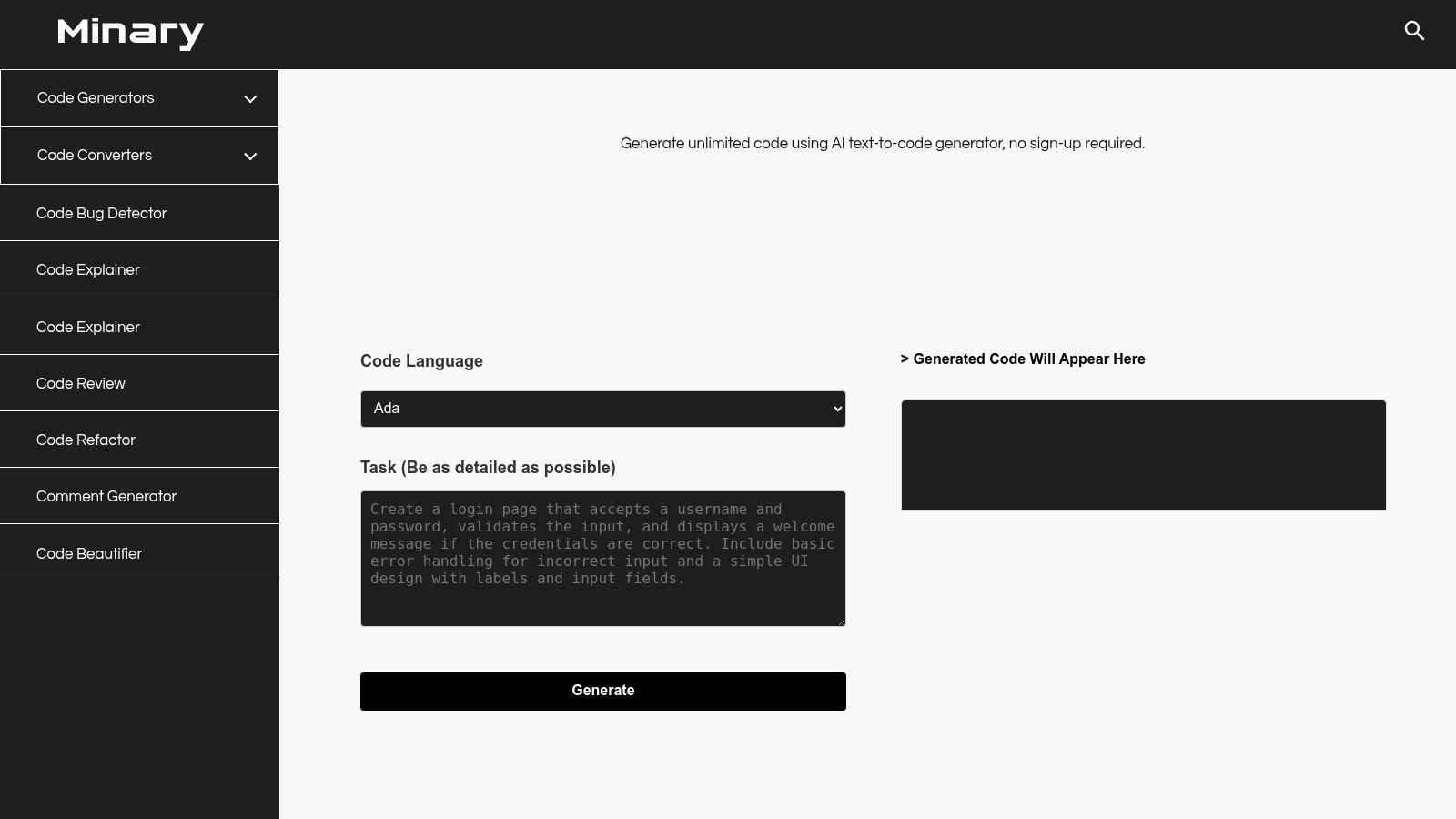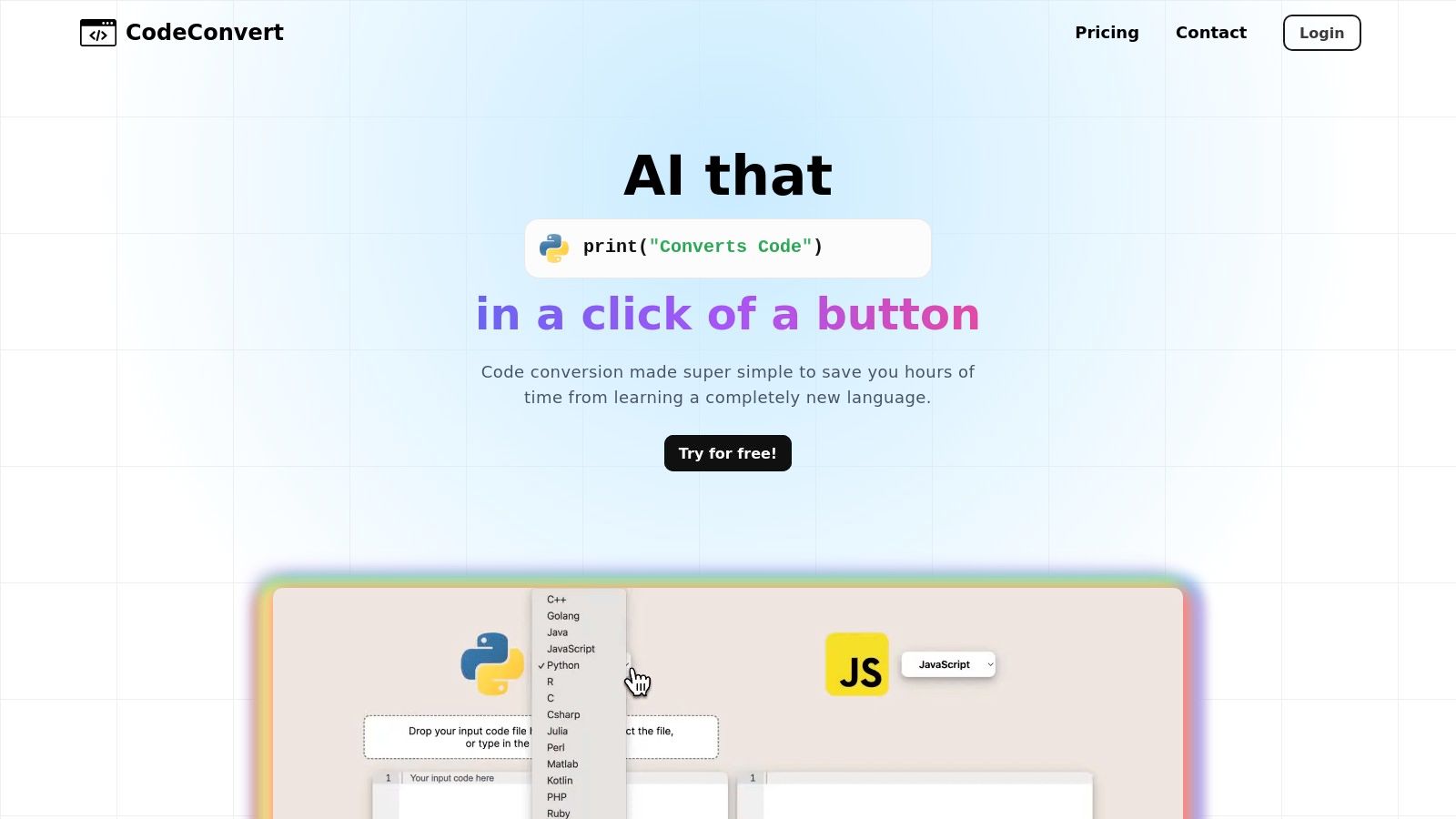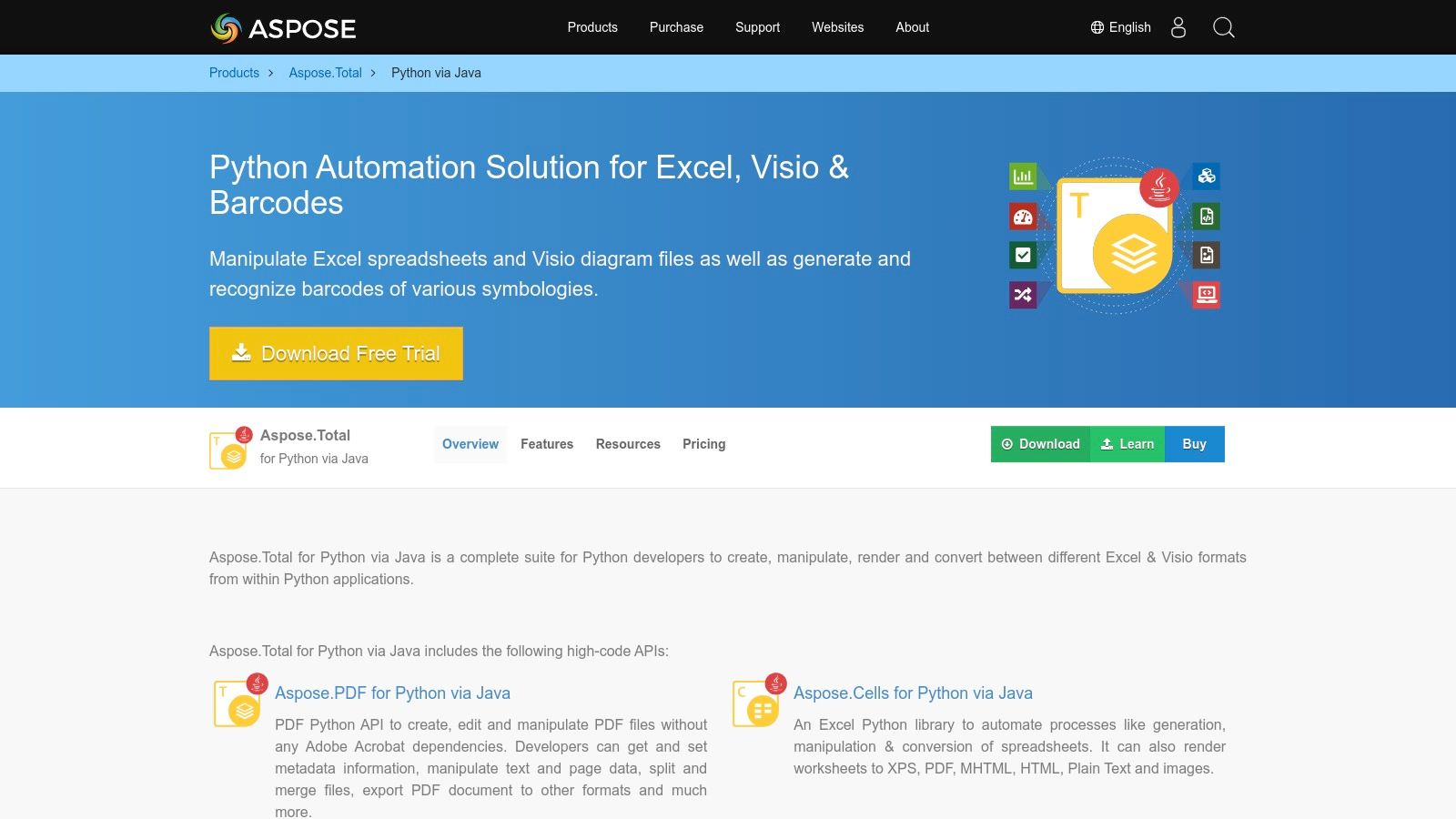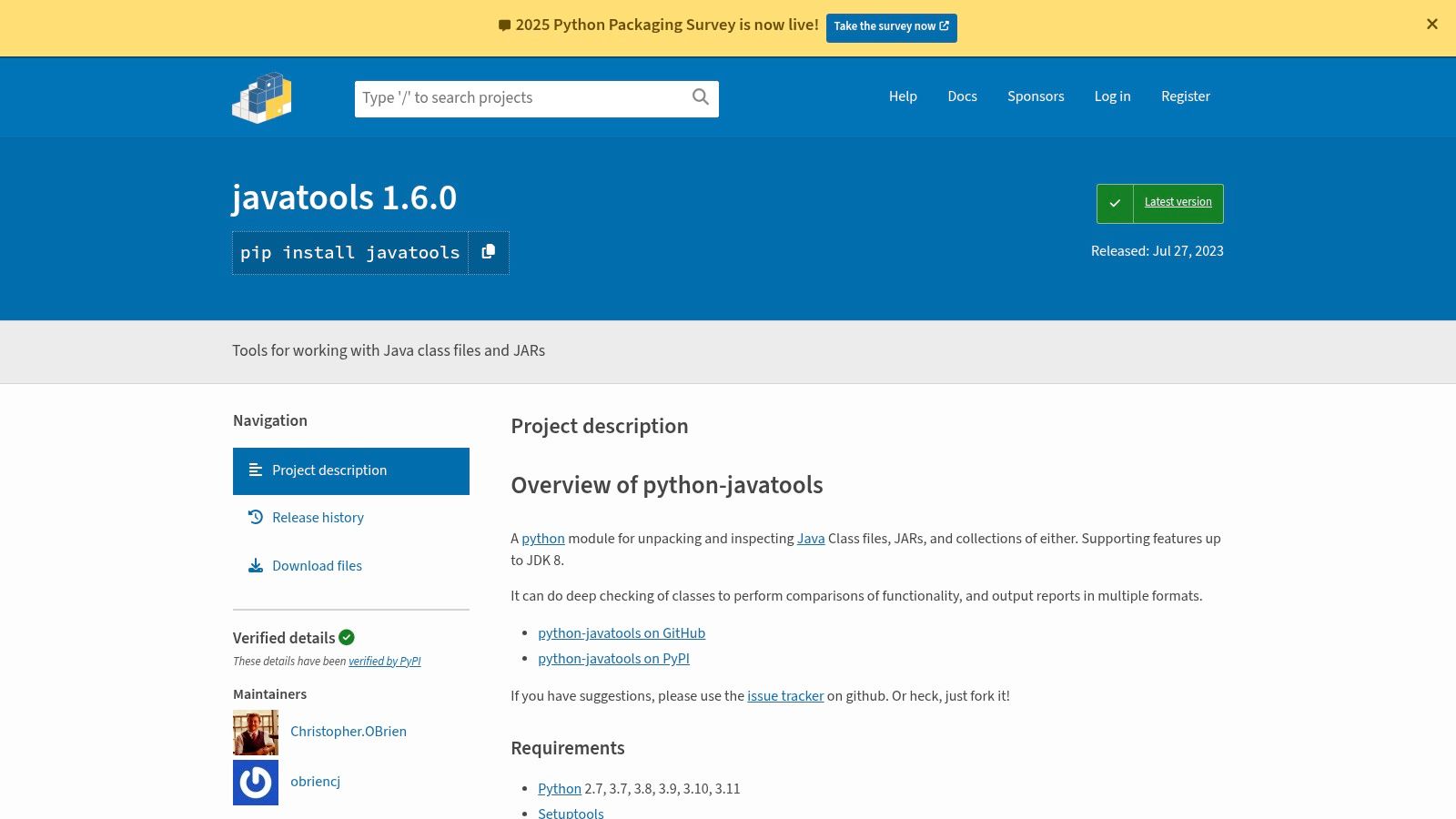Discover the 11 best Java to Python converter tools of 2025. Compare AI-powered solutions, free converters, and APIs to streamline your migration.
Migrating codebases from Java to Python presents a significant challenge, often involving intricate manual rewrites that are both time-consuming and prone to error. An effective java to python converter can dramatically streamline this process, translating syntax, libraries, and design patterns automatically. This guide provides a comprehensive analysis of the top converters available, designed to help you select the right tool for your specific project requirements.
This is a critical task for many development teams, especially when it comes to integrating legacy systems with modern applications where Java code needs to interface with a Python-driven ecosystem. The right converter can bridge this gap efficiently.
We will dissect each tool, moving beyond surface-level features to offer a detailed comparison. You will find an honest assessment of each platform’s capabilities, including:
Each entry includes screenshots for visual reference and direct links to get you started immediately. Our goal is to equip you with the insights needed to make an informed decision, ensuring your transition from Java to Python is as smooth and accurate as possible.
The Java to Python Code Converter from DocuWriter.ai stands out as a premier, AI-driven solution for developers navigating the complex task of language migration. This tool distinguishes itself by moving beyond simple syntax replacement, employing sophisticated AI algorithms to generate clean, idiomatic, and contextually accurate Python code. It is an exceptional choice for engineering teams undertaking significant project migrations from Java to Python, as well as for individual developers looking to understand the practical differences between the two languages.
The platform’s interface is intentionally minimalist and highly functional, allowing users to paste Java code directly and receive translated Python output almost instantly. This ease of use eliminates the steep learning curve often associated with complex developer tools, making it accessible for projects of all sizes. What truly elevates this tool is its commitment to user empowerment through education.

HashMap to a Python dictionary, which is invaluable for learning and for code reviews. For further guidance on best practices, you can learn more about how to document Python code effectively.This tool is particularly effective for modernizing legacy Java applications by migrating them to a more agile Python backend. A development team can use it to rapidly convert business logic, data models, and utility classes, significantly reducing the manual effort and potential for human error. For freelance developers, it serves as a powerful accelerator, enabling them to take on cross-language projects with greater confidence.
Website: Java to Python Code Converter
CodePorting’s tool differentiates itself by leveraging artificial intelligence to handle imperfect code. Unlike many syntax-focused translators, this online Java to Python converter is engineered to interpret and convert incomplete or unformatted Java snippets. This makes it exceptionally useful for developers working with legacy codebases or partial examples who need a quick, intelligent translation without first needing to clean up the source.

The platform’s strength lies in its customization capabilities. Users can guide the AI with inline instructions or use YAML configurations to fine-tune the output, ensuring the resulting Python code aligns with specific project standards. This level of control moves beyond simple translation into the realm of intelligent code adaptation. For a deeper understanding of how AI is transforming code maintenance, you can explore trends in AI-powered code refactoring.
Website: CodePorting Snippet Converter
Tangible Software Solutions offers a robust Java to Python converter known for its comprehensive and accurate translations. The tool is designed for developers who prioritize precision and security, as it performs all conversions locally on your machine rather than through a cloud service. It capably handles entire Java folders, individual files, and code snippets, providing a high degree of control over the output.
The key differentiator for this tool was its focus on producing clean, readable Python code, complete with helpful comments explaining complex translations. However, the product has been discontinued, and no new licenses are being sold. Existing customers can still download the software until May 2026, but future support and updates are limited, making it a legacy option for teams with existing licenses rather than a choice for new projects.
Website: Tangible Software Solutions
DocuWriter.ai offers a multifunctional platform that extends beyond simple translation. This AI-powered tool integrates code conversion with several critical development tasks, including documentation generation, test creation, and code refactoring. This holistic approach makes it a valuable asset for teams looking to streamline their entire development and migration workflow, rather than just handling isolated code snippets. The platform positions itself as a comprehensive development assistant, not just a one-off converter.
The key differentiator for this java to python converter is its ability to create supporting assets alongside the translated code. After converting a Java class to Python, developers can immediately generate corresponding unit tests or produce detailed documentation for the new code. This integration saves significant time and ensures that migrated code is well-documented and testable from the outset, promoting better maintenance practices and reducing the manual effort typically required after a language migration.
Website: DocuWriter.ai
Minary offers a free, web-based Java to Python converter that prioritizes simplicity and immediate access. It distinguishes itself by leveraging generative AI and machine learning for its translation logic, all without requiring users to sign up or register. This frictionless approach makes it an excellent choice for developers who need to perform quick, one-off conversions or test translation concepts without committing to a platform.

The platform is designed around a one-click conversion model, appealing to users who value speed over granular control. While it may not offer the advanced customization or project-level features of more robust solutions, its AI-driven engine provides a solid baseline translation for common Java patterns. This makes it a practical, no-cost starting point for code migration tasks.
Website: Minary Java to Python Converter
CodeConvert.ai offers a free, web-based tool designed for developers who need straightforward and rapid code translations. Its primary appeal lies in its simplicity, providing a no-frills interface where users can paste Java code and receive an instant Python equivalent. This makes it an excellent resource for educational purposes, quick syntax checks, or converting small, self-contained functions without the overhead of a complex tool.

The platform’s accessibility is its greatest strength, requiring no sign-up or installation. It stands out by providing clear, side-by-side example conversions directly on the page, helping users understand common translation patterns. While it may not handle intricate enterprise-level projects, this java to python converter serves as a valuable first-stop solution for basic conversion tasks and learning the differences between the two languages.
Website: CodeConvert.ai
Jordan Alfonso’s Lightning Java to Python Converter is engineered for large-scale migrations, focusing on speed and comprehensive feature handling. Unlike many online snippet tools, this converter is built to process tens of thousands of lines of Java code at once. Its key differentiator is the ability to translate not just core logic but also complex components like user interface code, event handlers, and even image data, aiming for functional parity in the Python output.
This tool is particularly valuable for teams undertaking full application rewrites from legacy Java systems to modern Python frameworks. It goes beyond simple syntax swapping to interpret and convert integral Java features such as lists, maps, and event-driven architectures. The emphasis on maintaining functionality post-conversion makes it a strong contender for projects where preserving the original application’s behavior is critical.
Website: Jordan Alfonso’s Lightning Java to Python Converter
Aspose.Total for Python via Java offers a different approach, focusing on interoperability rather than direct code translation. This platform provides a comprehensive suite of APIs that enable Python applications to leverage robust Java libraries for manipulating various file formats like DOCX, PDF, and XLSX. Instead of functioning as a traditional Java to Python converter, it acts as a bridge, allowing developers to call Java functions from within a Python environment, which is ideal for systems requiring polyglot capabilities.

The primary strength of Aspose is its extensive support for document and file processing. A team can continue developing core logic in Java while exposing that functionality to new Python-based services without a full rewrite. This strategy is particularly effective for large enterprises looking to modernize legacy Java systems incrementally or integrate specialized Java libraries into a Python-centric data science or web development workflow. It bypasses the need for a complex, all-or-nothing migration.
Website: Aspose.Total for Python via Java
Diverging from direct translation, Python’s javatools library offers a unique approach for developers who need to inspect and understand Java bytecode from within a Python environment. This open-source module isn’t a java to python converter in the traditional sense; instead, it provides programmatic access to unpack and analyze Java class files and JAR archives. Its primary function is to facilitate deep inspection of Java structures, making it an invaluable tool for interoperability, reverse engineering, or building custom migration tools.

The library empowers developers to build their own analysis scripts, enabling them to extract metadata, method signatures, and class dependencies directly from compiled Java assets. While it requires a Python environment and familiarity with command-line tools, its strength lies in providing the foundational components for a more customized and controlled analysis process, which is often a prerequisite for complex, large-scale migration projects.
Website: Python ‘javatools’ Library on PyPI